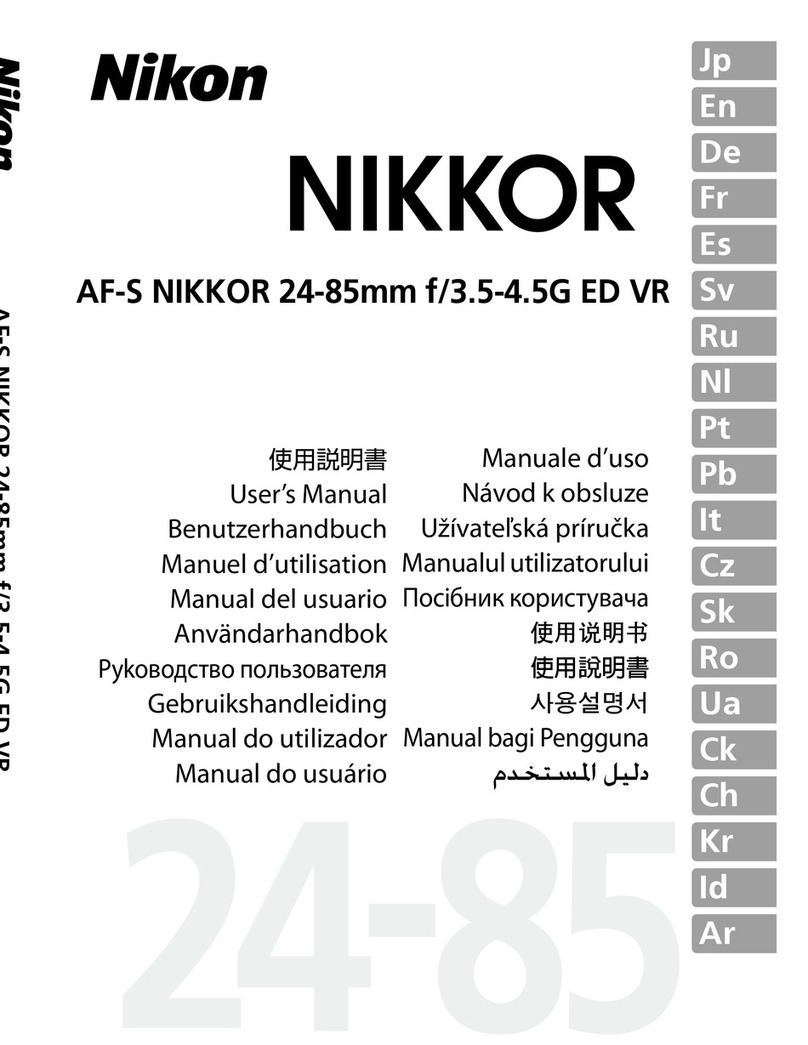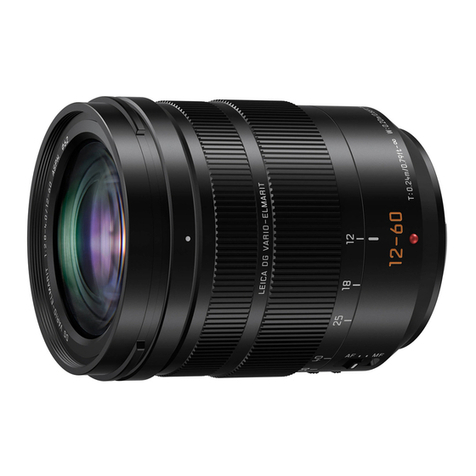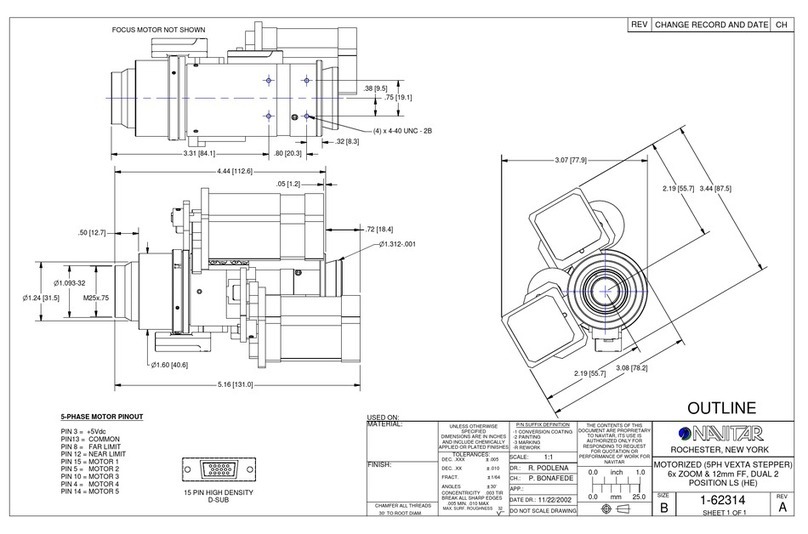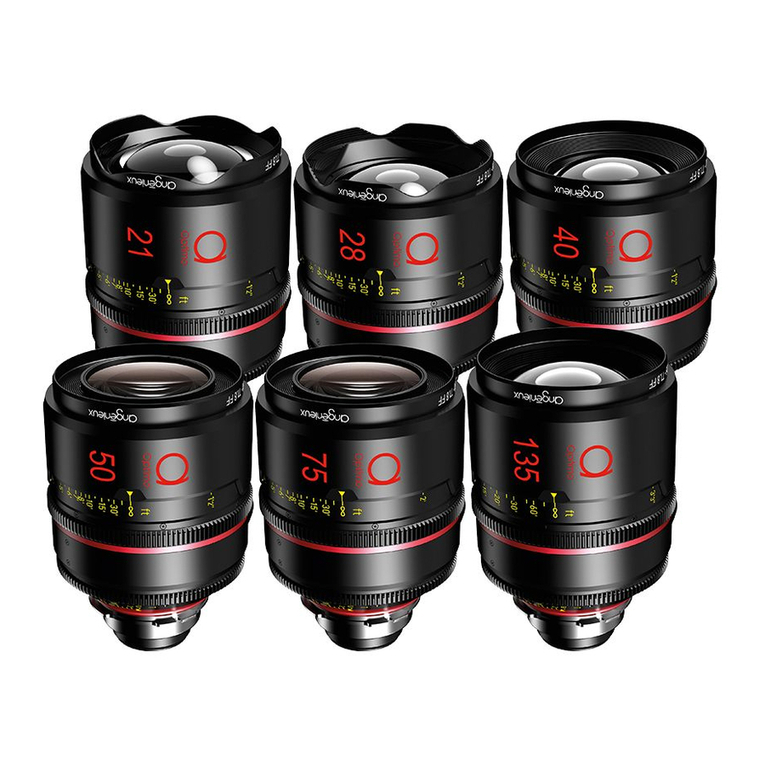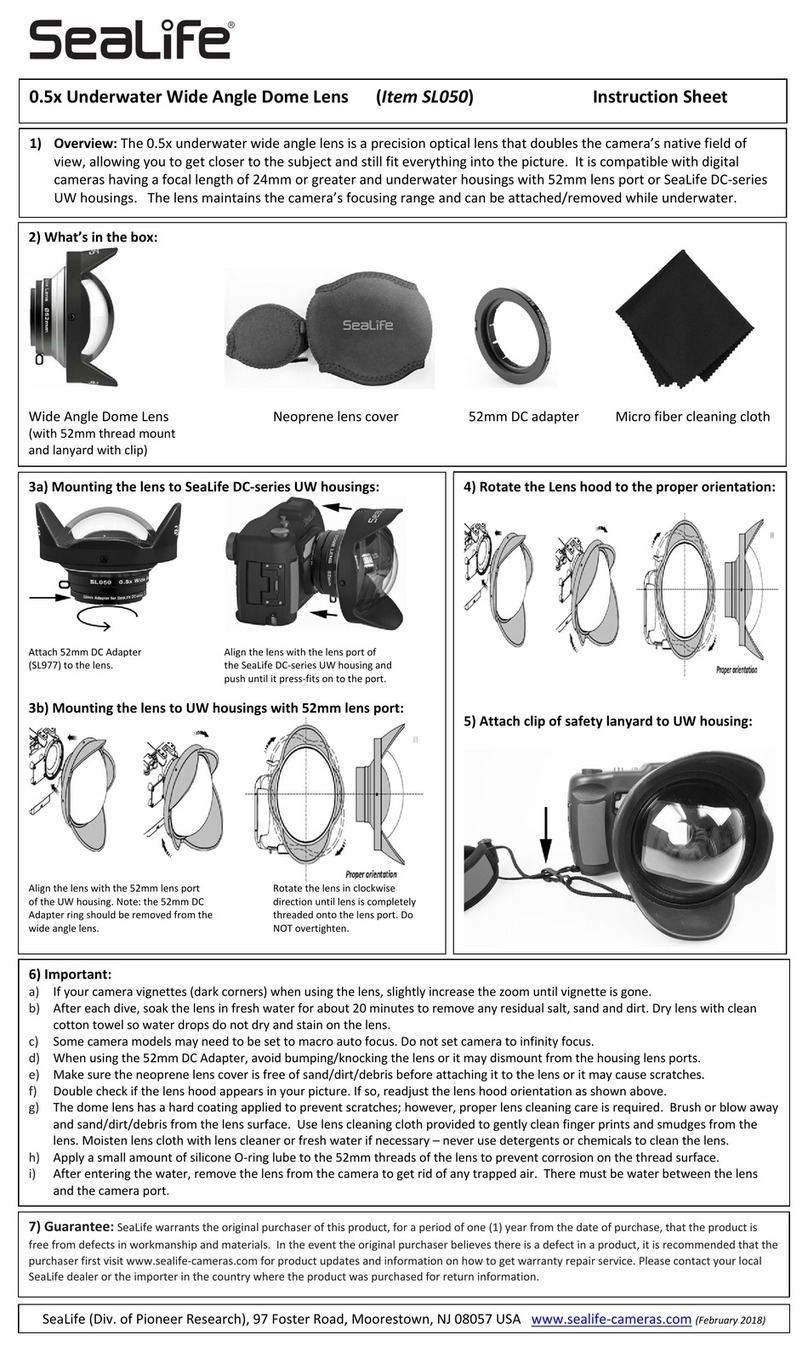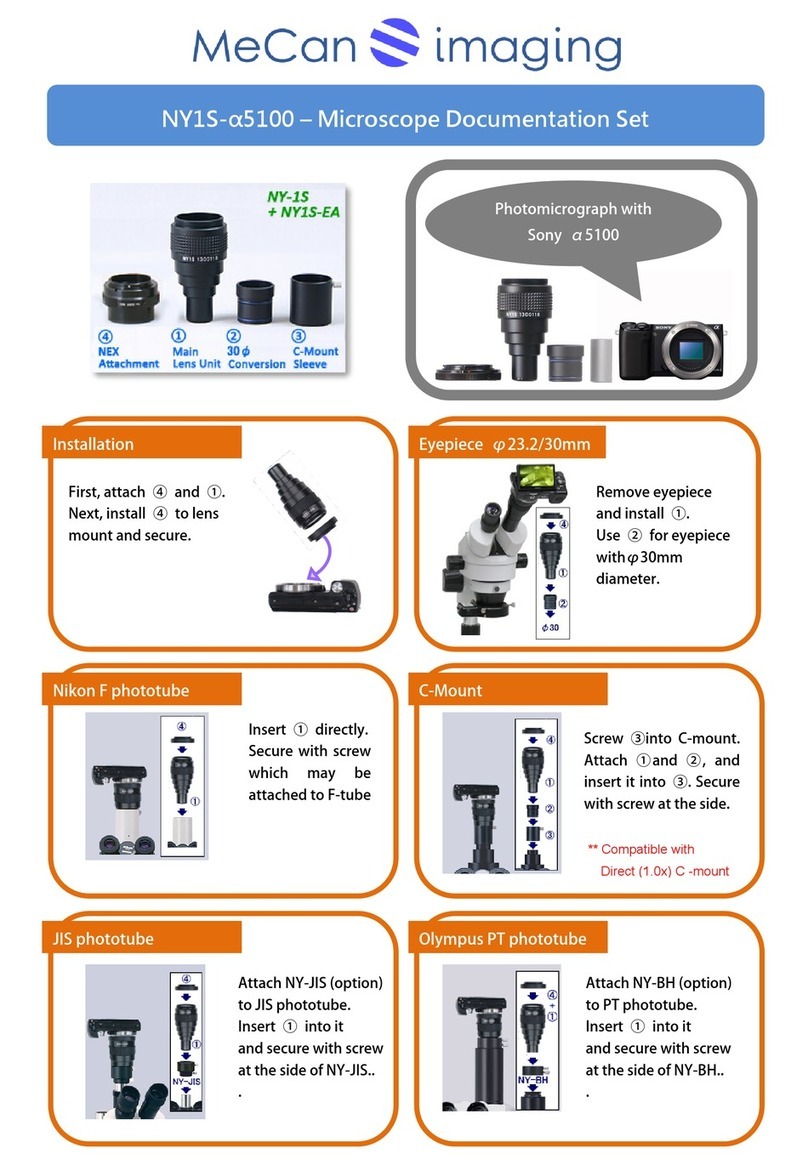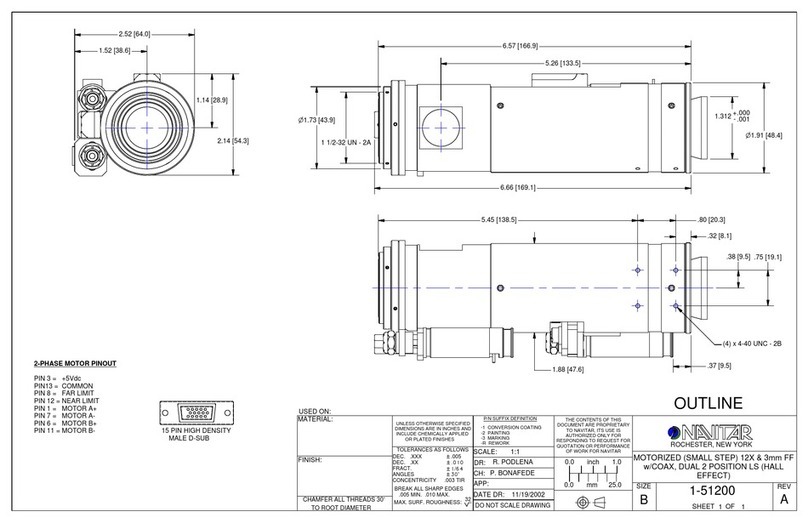Nikkor AF-S DX 18-300mm f/3.5-5.6G ED VR User manual

AF-S DX NIKKOR 18-300mm f/3.5-5.6G ED VR
Jp
En
De
Fr
Es
Sv
Ru
Nl
Pt
Pb
It
Cz
Sk
Ro
Ua
Ck
Ch
Kr
Id
AF-S DX NIKKOR 18-300mm f/3.5-5.6G ED VR
使用説明書
User’s Manual
Benutzerhandbuch
Manuel d'utilisation
Manual del usuario
Användarhandbok
Pykoводство пользoвaтеля
Gebruikshandleiding
Manual do utilizador
Manual do usuário
Manuale d'uso
Návod k obsluze
Užívateľská príručka
Manualul utilizatorului
Посібник користувача
Manual bagi Pengguna
ҋᅶᢪϷ
使用説明書の内容が破損などによって判読できなくなったときは、
ニコンサービス機関にて新しい使用説明書をお求め下さい(有料)。
No reproduction in any form of this manual, in whole or in part
(except for brief quotation in critical articles or reviews), may be
made without written authorization from NIKON CORPORATION.
© 2011 Nikon Corporation
Printed in Thailand
7MAA78J0-03
S
G12

2
Jp
En
De
Fr
Es
Sv
Ru
Nl
Pt
Pb
It
Cz
Sk
Ro
Ua
Ck
Ch
Kr
Id
安全上のご注意
ご使用の前に「安全上のご注意」をよくお読みのうえ、正しくお使い
ください。この「安全上のご注意」は製品を安全に正しく使用してい
ただき、あなたや他の人々への危害や財産への損害を未然に防止する
ために、重要な内容を記載しています。お読みになった後は、お使い
になる方がいつでも見られる所に必ず保管してください。
表示について
表示と意味は次のようになっています。
お守りいただく内容の種類を、次の絵表示で区分し、説明しています。
絵表示の例
A警告 この表示を無視して、誤った取り扱いをすると、人が死亡ま
たは重傷を負う可能性が想定される内容を示しています。
A注意
この表示を無視して、誤った取り扱いをすると、人が傷害を
負う可能性が想定される内容および物的損害の発生が想定
される内容を示しています。
L記号は、注意(警告を含む)を促す内容を告げるものです。図の中や近
くに具体的な注意内容(左図の場合は感電注意)が描かれています。
F記号は、禁止の行為(してはいけないこと)を告げるものです。図の中
や近くに具体的な禁止内容(左図の場合は分解禁止)が描かれています。
D記号は、行為を強制すること(必ずすること)を告げるものです。図の
中や近くに具体的な強制内容(左図の場合は電池を取り出す)が描かれて
います。
A警告
E分解禁止 分解したり、修理や改造をしないこと
感電したり、異常動作をしてケガの原因となります。
G
C
接触禁止
すぐに
修理依頼を
落下などによって破損し、内部が露出したときは、露出部に手
を触れないこと
感電したり、破損部でケガをする原因となります。
カメラの電池を抜いて、販売店またはニコンサービス機関
に修理を依頼してください。
I
E
K

3
Jp
En
De
Fr
Es
Sv
Ru
Nl
Pt
Pb
It
Cz
Sk
Ro
Ua
Ck
Ch
Kr
Id
K
C
電池を取る
すぐに
修理依頼を
熱くなる、煙が出る、こげ臭いなどの異常時は、速やか
にカメラの電池を取り出すこと
そのまま使用すると火災、やけどの原因となります。
電池を取り出す際、やけどに充分注意してください。
電池を抜いて、販売店またはニコンサービス機関に修理を
依頼してください。
J
水かけ禁止
水につけたり、水をかけたり、雨にぬらしたりしないこと
発火したり感電の原因となります。
F使用禁止
引火、爆発のおそれのある場所では使用しないこと
プロパンガス・ガソリンなど引火性ガスや粉塵の発生する
場所で使用すると、爆発や火災の原因となります。
F
見ないこと
レンズまたはカメラで直接太陽や強い光を見ないこと
失明や視力障害の原因となります。
A注意
I感電注意 ぬれた手でさわらないこと
感電の原因になることがあります。
F放置禁止 製品は、幼児の手の届くところに置かない
ケガの原因になることがあります。
A使用注意
逆光撮影では、太陽を画角から充分にずらすこと
太陽光がカメラ内部で焦点を結び、火災の原因になること
があります。画角から太陽をわずかに外しても火災の原因
になることがあります。
A保管注意
使用しないときは、レンズにキャップをつけるか太陽光の
あたらない所に保管すること
太陽光が焦点を結び、火災の原因になることがあります。
A移動注意 三脚にカメラやレンズを取り付けたまま移動しないこと
転倒したりぶつけたりしてケガの原因になることがあります。
F放置禁止
窓を閉め切った自動車の中や直射日光が当たる場所など、
異常に温度が高くなる場所に放置しないこと
内部の部品に悪い影響を与え、火災の原因となることがあ
ります。
A警告

4
Jp
En
De
Fr
Es
Sv
Ru
Nl
Pt
Pb
It
Cz
Sk
Ro
Ua
Ck
Ch
Kr
Id
このたびは
DX
ニッコールレンズをお買い上げくださいまして、誠にあ
りがとうございます。ご使用の前に、この使用説明書をよくお読みの
上、正しくお使いください。また、カメラの使用説明書もご覧ください。
•このレンズは、DX フォーマットのニコンデジタル一眼レフカメラ
(D300シリーズ、D7000など)専用です。DXフォーマットでの撮
影画角は、
35 mm判換算で約1.5倍の焦点距離に相当する画角にな
ります。
■各部の名称
we r ty ou!0i!1 !2 !3
!4
!5
!6
!7
q
q
フード ..........................................
P. 9
wフード取り付け指標 .............. P. 9
eフードセット指標 .................. P. 9
rフード着脱指標 ...................... P. 9
tズームリング.......................... P. 5
y焦点距離目盛.......................... P. 5
u焦点距離目盛指標
i距離目盛
o距離目盛基準線
!0 フォーカスリング .................. P. 6
!1 レンズ着脱指標
!2 レンズマウント
ゴムリング........................ P. 1 1
!3 CPU信号接点........................ P. 1 1
!4 フォーカスモード切り換え
スイッチ.............................. P. 6
!5 手ブレ補正スイッチ .............. P. 7
!6 手ブレ補正モード切り換え
スイッチ.............................. P. 7
!7 ズームロック .......................... P. 5

5
Jp
En
De
Fr
Es
Sv
Ru
Nl
Pt
Pb
It
Cz
Sk
Ro
Ua
Ck
Ch
Kr
Id
■ズーミングと被写界深度
撮影を行う場合は、ズームリングを回転させ(焦点距離が変化しま
す)、構図を決めてからピント合わせを行ってください。プレビュー
(絞り込み)機構を持つカメラでは、撮影前にファインダー内で被写
界深度を確認できます。
•このレンズは、撮影距離が短くなるにしたがって焦点距離が短くな
ります。
•距離目盛は目安であり、被写体までの距離を保証するものではあり
ません。また、遠景撮影でも被写界深度などの影響により∞マーク
に届かない位置でピントが合う場合があります。
•焦点距離を 18mm にして、ズームロックを[LOCK]にセットす
ると、ズームリングがロックされます。
カメラを持ち歩く際は、レ
ンズ自体の重みで繰り出さないように、ロックしてください。
■絞り値の設定
絞り値は、カメラ側で設定してください。
開放F値の変化
このレンズはズーミングにより、開放F値が最大11/3段変化します。
ただし、露出を決める際に、F 値の変化量はカメラが自動的に補正し
ますので考慮する必要はありません。

6
Jp
En
De
Fr
Es
Sv
Ru
Nl
Pt
Pb
It
Cz
Sk
Ro
Ua
Ck
Ch
Kr
Id
■ピント合わせの方法
ご使用のカメラや撮影目的によって、下表のようなピント合わせが選
択できます。
•カメラのフォーカスモードについては、カメラの使用説明書をご覧ください。
M/A
(マニュアル優先オートフォーカスモード)の使い方
zレンズのフォーカスモード切り換えスイッチを[M/A]にセット
する
xオートフォーカス撮影時、カメラのシャッターボタンを半押しし
たまま、あるいはAF作動(AF-ON)ボタンを保持したまま、
フォーカスリングを手で回転させる
•瞬時にマニュアルフォーカス撮影が行えます。
•カメラのシャッターボタンの半押しやAF作動(AF-ON)ボタン
を再度操作するとオートフォーカスで撮影が可能となります。
オートフォーカスが苦手な被写体について
「広角・超広角レンズのオートフォーカス撮影について」(P. 13)を
ご覧ください。
■手ブレ補正機能(VRⅡ)
手ブレ補正機能(VRⅡ)を使用すると、使わないときと比べ約4 段
分※シャッタースピードを遅くして撮影できるため、シャッタース
ピードの選択範囲が広がり、幅広い領域で手持ち撮影が可能です。
(※当社測定条件によります。また、手ブレ補正効果は、撮影者や撮影条件に
よって異なります。)
カメラのフォーカス
モード
レンズのフォーカスモード
M/A M
AF マニュアル優先
オートフォーカス
マニュアルフォーカス
(フォーカスエイド可)
MF マニュアルフォーカス
(フォーカスエイド可)

7
Jp
En
De
Fr
Es
Sv
Ru
Nl
Pt
Pb
It
Cz
Sk
Ro
Ua
Ck
Ch
Kr
Id
手ブレ補正機能の概念図
手ブレ補正スイッチの使い方
手ブレ補正モード切り換えスイッチの使い方
手ブレ補正スイッチを[ON]にし、手ブレ補正モード切り換えス
イッチを設定します。
高
周
波
数
低
小 振 幅 大
NORMALモードで対応 ACTIVEモードで対応
手ブレ補正 NORMALモードまたはACTIVEモード
で対応
流し撮りでの手ブレ補正 NORMALモードで対応
激しい揺れでの手ブレ補正 ACTIVEモードで対応
ON:
シャッターボタンを半押しすると、手ブレを補正
します。ファインダー像のブレも補正するため、ピン
ト合わせが容易で、フレーミングしやすくなります。
OFF:手ブレを補正しません。
NORMAL:主に、通常の手ブレを補正します。流し
撮りでも手ブレを補正します。
ACTIVE:乗り物に乗っている等、揺れの激しい条件
でのブレから通常の手ブレまで補正します。このモー
ドでは流し撮り自動検出は行いません。
手ブレ
流し撮り(パンニング)
激しい揺れ
例)乗り物等
での揺れ

8
Jp
En
De
Fr
Es
Sv
Ru
Nl
Pt
Pb
It
Cz
Sk
Ro
Ua
Ck
Ch
Kr
Id
手ブレ補正使用時のご注意
•シャッターボタンを半押し後、ファインダー像が安定してから撮影
することをおすすめします。
•手ブレ補正の原理上、シャッターレリーズ後にファインダー像がわ
ずかに動くことがありますが、異常ではありません。
•流し撮りする場合は、必ず NORMAL モードにしてください。
NORMALモードでは、流し撮りなどでカメラの向きを大きく変え
た場合、流した方向の手ブレ補正は機能しません。例えば、横方向
に流し撮りすると、縦方向の手ブレだけが補正されます。
•手ブレ補正中にカメラの電源をOFFにしたり、レンズを取り外した
りしないでください(その状態でレンズを振るとカタカタ音がする
ことがありますが、故障ではありません。カメラの電源スイッチを
再度ONにすれば、音は消えます)。
•内蔵フラッシュ搭載のカメラで、内蔵フラッシュ充電中は、手ブレ
補正は行いません。
•三脚を使用するときは、手ブレ補正スイッチを[OFF]にしてくだ
さい。ただし、三脚を使っても雲台を固定しないときや、一脚を使
用するときには、スイッチを[ON]にすることをおすすめします。

9
Jp
En
De
Fr
Es
Sv
Ru
Nl
Pt
Pb
It
Cz
Sk
Ro
Ua
Ck
Ch
Kr
Id
■フードの使い方
画像に悪影響を及ぼす光線をカットし、レンズ面の保護にも役立ちます。
取り付け方
•フード先端を強くつかむと着脱が困難になります。着脱の際は、
フード取り付け指標( )付近を持って回転させてください。
•フードが正しく取り付けられないと画像にケラレを生じますので
ご注意ください。
•収納時はフードを逆向きにしてレンズに取り付けられます。着脱の
際は、フードセット指標(
—
{
)付近を持って回転させてください。
•
フード着脱指標(
●
)とフードセット
指標(
—
{
)が合っていることを確認
してください(
e
)。

10
Jp
En
De
Fr
Es
Sv
Ru
Nl
Pt
Pb
It
Cz
Sk
Ro
Ua
Ck
Ch
Kr
Id
■カメラの内蔵フラッシュ使用時のご注意
•撮影距離0.6m以上で使用してください。
•ケラレを防止するために、レンズのフードは取り外して使用してく
ださい。
※ カメラの内蔵フラッシュのケラレとは、フラッシュの光がレンズの先端でさ
えぎられて影になり、画像に映り込む現象です。
カメラ ケラレなく撮影できる焦点距離と撮影距離
D700(DXフォー
マット時)
•焦点距離18mmでは撮影距離3.0m以上
•焦点距離28mm以上は制約なし
D7000/
D300シリーズ/
D200
•焦点距離28mmでは撮影距離1.0m以上
•焦点距離50mm以上は制約なし
D100 •焦点距離28mmでは撮影距離1.5m以上
•焦点距離50mm以上は制約なし
D90/D80/
D70シリーズ
•焦点距離28mmでは撮影距離2.5m以上
•焦点距離50mm以上では撮影距離1.0m以上
D5100/D5000/
D3100/D3000/
D60/D40シリーズ
•焦点距離50mm以上では撮影距離1.0m以上
D50 •焦点距離28mmでは撮影距離2.0m以上
•焦点距離50mm以上では撮影距離1.0m以上

11
Jp
En
De
Fr
Es
Sv
Ru
Nl
Pt
Pb
It
Cz
Sk
Ro
Ua
Ck
Ch
Kr
Id
■レンズのお手入れと取り扱い上のご注意
•フードをレンズに装着した状態で、フードだけを持たないでくだ
さい。
•CPU信号接点は汚さないようにご注意ください。
•レンズマウントゴムリングが破損した場合は、そのまま使用せず販
売店またはニコンサービス機関に修理を依頼してください。
•レンズ面の清掃は、ホコリを拭う程度にしてください。指紋がつい
たときは、柔らかい清潔な木綿の布に無水アルコール(エタノー
ル)または市販のレンズクリーナーを少量湿らせ、レンズの中心か
ら外周へ渦巻状に、拭きムラ、拭き残りのないように注意して拭い
てください。
•
シンナーやベンジンなどの有機溶剤は絶対に使用しないでください。
•レンズ表面の汚れや傷を防ぐためには、NC フィルターをお使いい
ただけます。また、レンズのフードも役立ちます。
•レンズをケースに入れるときは、必ずレンズキャップと裏ぶたを取
り付けてください。
•レンズを長期間使用しないときは、カビやサビを防ぐために、高温
多湿のところを避けて風通しのよい場所に保管してください。ま
た、直射日光のあたるところ、ナフタリンや樟脳のあるところも避
けてください。
•レンズを水に濡らすと、部品がサビつくなどして故障の原因となり
ますのでご注意ください。
•ストーブの前など、高温になるところに置かないでください。極端
に温度が高くなると、外観の一部に使用している強化プラスチック
が変形することがあります。
■付属アクセサリー
•77mmスプリング式レンズキャップ LC-77
•裏ぶた LF-4
•バヨネットフード HB-58
•ソフトケース CL-1120

12
Jp
En
De
Fr
Es
Sv
Ru
Nl
Pt
Pb
It
Cz
Sk
Ro
Ua
Ck
Ch
Kr
Id
■使用できるアクセサリー
•77mmネジ込み式フィルター
■仕様
※ 仕様、外観の一部を、改善のため予告なく変更することがあります。
型式 ニコンFマウントCPU内蔵Gタイプ、AF-S DXレンズ
焦点距離 18 mm—300 mm
最大口径比 1:3.5—5.6
レンズ構成 14群19枚(非球面レンズ3枚、EDレンズ3枚)
画角 76°—5°20'
焦点距離目盛 18、28、50、105、200、300 mm
撮影距離情報 カメラへの撮影距離情報を出力可能
ズーミング ズームリングによる回転式
ピント合わせ IF(ニコン内焦)方式、超音波モーターによるオート
フォーカス、マニュアルフォーカス可能
手ブレ補正
ボイスコイルモーター
(VCM
)によるレンズシフト方式
撮影距離目盛 ∞〜0.45 m
最短撮影距離 焦点距離300 mm時:撮像面から 0.45 m
絞り羽根枚数 9枚(円形絞り)
絞り方式 自動絞り
絞りの範囲 •焦点距離18 mm時:
f/3.5―22
•焦点距離300 mm時:
f/5.6―32
測光方式 開放測光
アタッチメン
トサイズ 77 mm(P=0.75 mm)
寸法 約83 mm(最大径)×120 mm(レンズマウント基
準面からレンズ先端まで)
質量 約830 g

13
Jp
En
De
Fr
Es
Sv
Ru
Nl
Pt
Pb
It
Cz
Sk
Ro
Ua
Ck
Ch
Kr
Id
■広角・超広角レンズのオートフォーカス撮影に
ついて
広角・超広角レンズでは、標準クラスのレンズと比べ、次のような撮
影条件になりやすく、オートフォーカス撮影時には注意が必要です。
以下をお読みになって、オートフォーカス撮影にお役立てください。
1. フォーカスフレームに対して主要な被写体が小さい場合
図1のように、フォーカスフレーム内に遠くの建物と近くの人物が混
在するような被写体になると、背景にピントが合い、人物のピント精
度が低下する場合があります。
2. 絵柄が細かい場合
図2のように、被写体が小さいか、明暗差が少ない被写体になると、
オートフォーカスにとっては苦手な被写体になります。
このようなときには・・・
1、2のような被写体条件でオートフォーカスがうまく働かない場合、
主要被写体とほぼ同じ距離にある被写体でフォーカスロックし、構図
を元に戻して撮影する方法が有効です。
また、マニュアルフォーカスに切り換えて、マニュアルでピントを合
わせて撮影する方法もあります。
その他
お手持ちのカメラの使用説明書で「オートフォーカスが苦手な被写
体」についての説明も参照してください。
図1 <人物> 図2 <花畑>

14
Jp
En
De
Fr
Es
Sv
Ru
Nl
Pt
Pb
It
Cz
Sk
Ro
Ua
Ck
Ch
Kr
Id
For Your Safety
CAUTIONS
•Do not disassemble.
Touching the internal parts of the camera or lens
could result in injury.
In the event of malfunction, the product should
be repaired only by a qualified technician.
Should the product break
open as the result of a fall or other accident, remove the camera
battery and/or disconnect the AC adapter and then take the product
to a Nikon-authorized service center for inspection.
•Turn the camera off immediately in the event of malfunction.
Should
you notice smoke or an unusual smell coming from the equipment,
immediately unplug the AC adapter and remove the camera battery,
taking care to avoid burns.
Continued operation could result in fire or
injury.
After removing the battery, take the equipment to a Nikon-
authorized service center for inspection.
•
Donotuseinthepresenceof flammable gas
.
Operating electronic equip-
ment in the presence of flammable gas could result in explosion or fire.
•Do not look at the sun through the lens or the camera viewfinder.
Viewing the sun or other bright light source through the lens or
viewfinder could cause permanent visual impairment.
•Keep out of reach of children.
Failure to observe this precaution could
result in injury.
•Observe the following precautions when handling the lens and camera:
- Keep the lens and camera dry.
Failure to observe this precaution
could result in fire or electric shock.
- Do not handle the lens or camera with wet hands.
Failure to observe
this precaution could result in electric shock.
- Keep the sun well out of the frame when shooting backlit subjects.
Sunlight focused into the camera when the sun is in or close to the
frame could cause a fire.
- If the lens will not be used for an extended period, attach the front
and rear lens caps and store the lens out of direct sunlight.
If left in
direct sunlight, the lens could focus the sun’s rays onto flammable
objects, causing fire.
•Do not carry tripods with a lens or camera attached.
You could trip or
accidentally strike others, resulting in injury.
•
Donotleavethelenswhereitwillbeexposedtoextremelyhightemperatures,
such as in an enclosed automobile or in direct sunlight
.
Failure to observe this
precaution could adversely affect the lens’ internal parts, causing fire.

15
Jp
En
De
Fr
Es
Sv
Ru
Nl
Pt
Pb
It
Cz
Sk
Ro
Ua
Ck
Ch
Kr
Id
Thank you for your purchase of an AF-S DX NIKKOR 18–300mm
f/3.5–5.6G ED VR lens.
Before using this product, please
carefully read both these instructions and the camera manual.
Note: DX lenses are for use only with DX-format digital single-lens
reflex cameras such as the D7000 or D300 series.
The angle of
view of a lens on a DX-format camera is equivalent to that of a
lens with a focal length about 1.5 × longer mounted on a 35 mm
format camera.
■Parts of the Lens
we r ty ou!0i!1 !2 !3
!4
!5
!6
!7
q
qLens hood .................................20
wLens hood alignment
mark.........................................20
eLens hood lock mark..........20
rLens hood mounting
mark.........................................20
tZoom ring .................................16
yFocal length scale.................16
uFocal length mark
iFocus distance indicator
oFocus distance mark
!0 Focus ring.................................. 17
!1 Lens mounting mark
!2 Rubber lens-mount
gasket ..................................... 21
!3 CPU contacts........................... 21
!4 Focus-mode switch ............ 17
!5 Vibration reduction
ON/OFF switch ................. 18
!6 Vibration reduction mode
switch ..................................... 19
!7 Zoom lock................................. 16

16
Jp
En
De
Fr
Es
Sv
Ru
Nl
Pt
Pb
It
Cz
Sk
Ro
Ua
Ck
Ch
Kr
Id
■Zoom and Depth of Field
Before focusing, rotate the zoom ring to adjust the focal
length and frame the photograph.
If the camera offers depth-
of-field preview (stop down), depth of field can be previewed
in the viewfinder.
Note: Focal length decreases as the focus distance shortens.
Note
that the focus distance indicator is intended only as a guide and
may not accurately show the distance to the subject and may,
due to depth of field or other factors, not show ∞when the
camera is focused on a distant object.
To lock the zoom ring, rotate it to the 18 mm position and slide
the zoom lock to LOCK.
This prevents the lens extending
under its own weight while the camera is being carried from
place to place.
■Aperture
Aperture is adjusted using camera controls.
Zoom and Maximum Aperture
Changes to zoom can alter the maximum aperture by up to
11/3EV.
The camera however automatically takes this into
account when setting exposure, and no modifications to
camera settings are required following adjustments to zoom.

17
Jp
En
De
Fr
Es
Sv
Ru
Nl
Pt
Pb
It
Cz
Sk
Ro
Ua
Ck
Ch
Kr
Id
■Focus
Supported focus modes are shown in the following table (for
information on camera focus modes, see the camera manual; for
information on getting good results with autofocus, see “A Note
on Wide- and Super Wide-Angle Lenses” on page 23).
M/A (Autofocus with Manual Override)
To focus using autofocus with manual override (M/A):
■Vibration Reduction (VRII)
Vibration reduction (VRII) reduces blur caused by camera
shake, allowing shutter speeds up to four stops slower than
would otherwise be the case (Nikon measurements; effects
vary with the photographer and shooting conditions).
This
increases the range of shutter speeds available and permits
hand-held, tripod-free photography in a wide range of
situations.
Camera
focus mode
Lens focus mode
M/A M
AF Autofocus with manual
override
Manual focus with
electronic rangefinder
MF Manual focus with electronic rangefinder
zSlide the lens focus-mode switch to M/A.
xFocus.
If desired, autofocus can be over-ridden by rotating the
lens focus ring while the shutter-release button is pressed
halfway (or, if the camera is equipped with an AF-ON
button, while the AF-ON button is pressed).
To refocus
using autofocus, press the shutter-release button halfway
or press the AF-ON button again.

18
Jp
En
De
Fr
Es
Sv
Ru
Nl
Pt
Pb
It
Cz
Sk
Ro
Ua
Ck
Ch
Kr
Id
Choose from NORMAL and ACTIVE vibration reduction
according to the frequency and amplitude of the vibration.
•Camera shake: Choose NORMAL or ACTIVE.
•Shooting while panning: Choose NORMAL.
•Strong camera shake: Choose ACTIVE.
Using the Vibration Reduction ON/OFF Switch
High Frequency Low
Low Amplitude High
: Suited to NORMAL vibration reduction.
: Suited to ACTIVE vibration reduction.
Select ON to enable vibration reduction.
Vibration
reduction is activated when the shutter-release
button is pressed halfway, reducing the effects
of camera shake for improved framing and focus.
Select OFF to turn vibration reduction off.
Strong
camera shake
(e.g., moving
vehicle)
Camera shake
Shooting while panning

19
Jp
En
De
Fr
Es
Sv
Ru
Nl
Pt
Pb
It
Cz
Sk
Ro
Ua
Ck
Ch
Kr
Id
Using the Vibration Reduction Mode Switch
The vibration reduction mode switch is used to select the
vibration reduction mode when vibration reduction is on.
Using Vibration Reduction: Notes
• When using vibration reduction, press the shutter-release
button halfway and wait for the image in the viewfinder to
stabilize before pressing the shutter-release button the rest
of the way down.
• When vibration reduction is active, the image in the
viewfinder may be blurred after the shutter is released.
This
does not indicate a malfunction.
• Slide the vibration reduction mode switch to NORMAL for
panning shots.
When the camera is panned, vibration
reduction applies only to motion that is not part of the pan
(if the camera is panned horizontally, for example, vibration
reduction will be applied only to vertical shake), making it
much easier to pan the camera smoothly in a wide arc.
• Do not turn the camera off or remove the lens while
vibration reduction is in effect.
If power to the lens is cut
while vibration reduction is on, the lens may rattle when
shaken.
This is not a malfunction, and can be corrected by
reattaching the lens and turning the camera on.
• If the camera is equipped with a built-in flash, vibration
reduction will be disabled while the flash charges.
• Turn vibration reduction off when the camera is securely
mounted on a tripod, but leave it on if the tripod head is not
secured or when using a monopod.
Select NORMAL to reduce vibration caused by
camera shake or when panning the camera.
Select ACTIVE to reduce vibration caused by
camera shake or when shooting from a moving
car, boat, or other unstable platform.
Panning
motions are not detected.

20
Jp
En
De
Fr
Es
Sv
Ru
Nl
Pt
Pb
It
Cz
Sk
Ro
Ua
Ck
Ch
Kr
Id
■The Lens Hood
The lens hoods protect the lens and block stray light that
would otherwise cause flare or ghosting.
When attaching or removing the hood, hold it near the
symbol on its base and avoid gripping it too tightly.
Vignetting may occur if the hood is not correctly attached.
The hood can be reversed and mounted on the lens when not in
use.
When the hood is reversed, it can be attached and removed
by rotating it while holding it near the lock mark (—
{
).
■Built-in Flash Units
When using the built-in flash on cameras equipped with a
built-in flash unit, shoot at ranges of 0.6 m (2 ft) or more and
remove the lens hood to prevent vignetting (shadows created
where the end of the lens obscures the built-in flash).
Align the lens hood lock mark (—{)
with the lens hood mounting mark
(●) on the lens (e).
Camera Focal length Use at ranges of
D700 (DX format) 18 mm 3.0 m (9 ft 10 in.) or more
28 mm or more No restrictions
D7000/D300 series/D200 28 mm 1.0 m (3 ft 3 in.) or more
50 mm or more No restrictions
D100 28 mm 1.5 m (4 ft 11 in.) or more
50 mm or more No restrictions
D90/D80/D70 series 28 mm 2.5 m (8 ft 2 in.) or more
50 mm or more 1.0 m (3 ft 3 in.) or more
D5100/D5000/D3100/
D3000/D60/D40 series 50 mm or more 1.0 m (3 ft 3 in.) or more
D50 28 mm 2.0 m (6 ft 7 in.) or more
50 mm or more 1.0 m (3 ft 3 in.) or more
Table of contents
Other Nikkor Lens manuals
Popular Lens manuals by other brands

Tamron
Tamron SP 70-300mm F/4-56 Di VC USD Brochure & specs
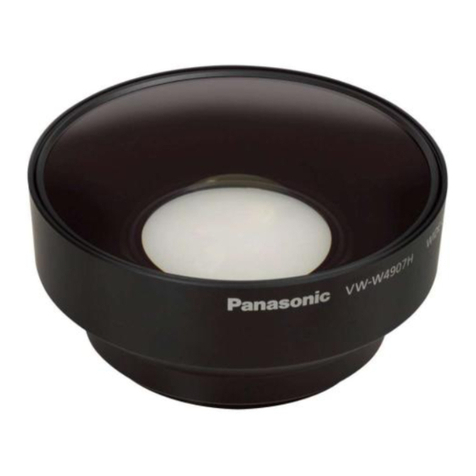
Panasonic
Panasonic VW-W4907 operating instructions
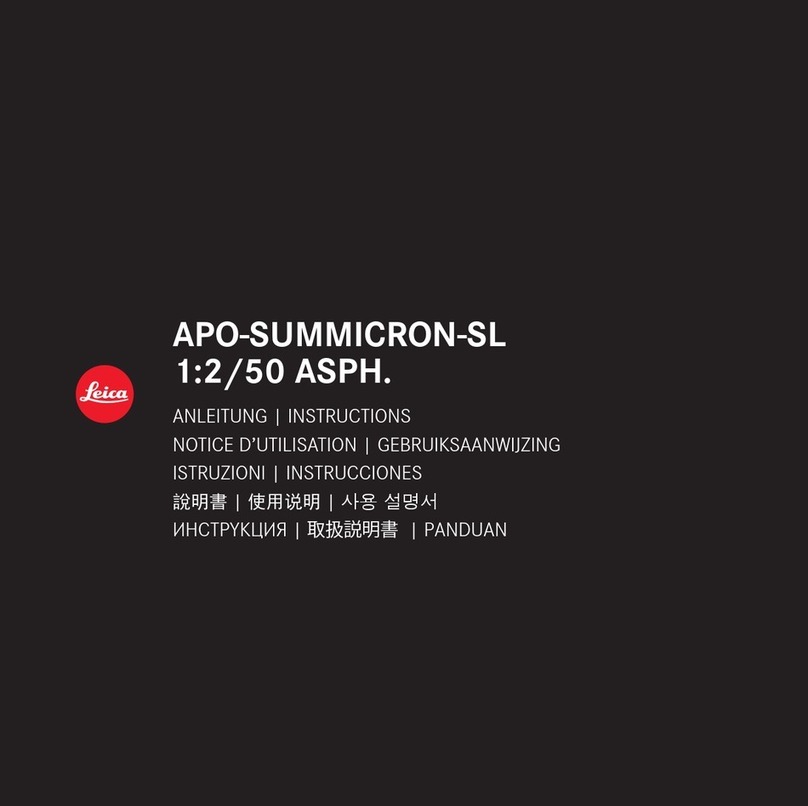
Leica
Leica APO-SUMMICRON-SL 1:2/50 ASPH. instructions

Cosina
Cosina Voigtländer NOKTON instruction manual

Cosina
Cosina Voigtländer NOKTON instruction manual

Cosina
Cosina Voigtländer SUPER NOKTON 29mm F0.8... instruction manual
